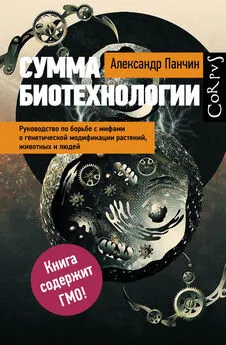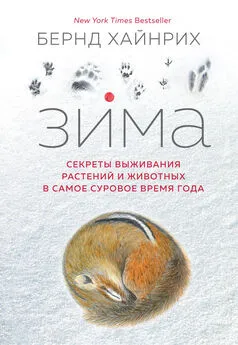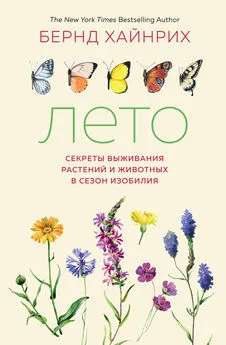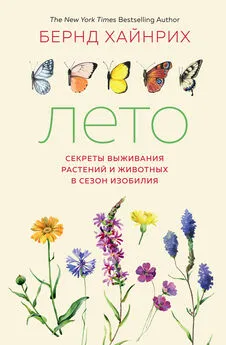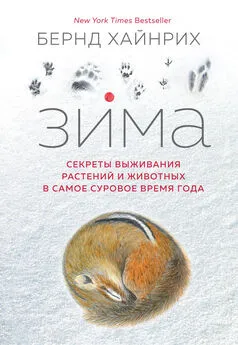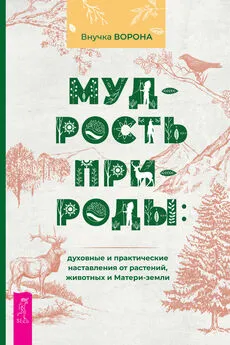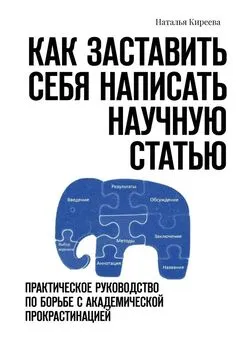Александр Панчин - Сумма биотехнологии. Руководство по борьбе с мифами о генетической модификации растений, животных и людей
- Название:Сумма биотехнологии. Руководство по борьбе с мифами о генетической модификации растений, животных и людей
- Автор:
- Жанр:
- Издательство:АСТ: CORPUS
- Год:2016
- Город:Москва
- ISBN:978-5-17-093602-1
- Рейтинг:
- Избранное:Добавить в избранное
-
Отзывы:
-
Ваша оценка:
Александр Панчин - Сумма биотехнологии. Руководство по борьбе с мифами о генетической модификации растений, животных и людей краткое содержание
Сумма биотехнологии. Руководство по борьбе с мифами о генетической модификации растений, животных и людей - читать онлайн бесплатно ознакомительный отрывок
Интервал:
Закладка:
15. Stein L. et al.: Clinical gene therapy for the treatment of RPE65-associated Leber congenital amaurosis. Expert Opin Biol Ther 2011, 11(3):429–39.
16. Gaspar H.B. et al.: Long-term persistence of a polyclonal T cell repertoire after gene therapy for X-linked severe combined immunodeficiency. Sci Transl Med 2011, 3(97):97ra79.
17. Brentjens R.J. et al.: CD19-targeted T cells rapidly induce molecular remissions in adults with chemotherapy-refractory acute lymphoblastic leukemia. Sci Transl Med 2013, 5(177):177ra38.
18. Forsberg C.W. et al.: Integration, stability and expression of the E. coli phytase transgene in the Cassie line of Yorkshire Enviropig. Transgenic Res 2013, 22(2):379–89.
19. Callaway E.: Glowing plants spark debate. Nature 2013, 498(7452):15–6.
20. Marcus J.M. et al.: Germline transformation of the butterfly Bicyclus anynana. Proc Biol Sci 2004, 271 Suppl 5:S263–5.
21. Ormandy E.H. et al.: Genetic engineering of animals: ethical issues, including welfare concerns. Can Vet J 2011, 52(5):544–50.
22. Clark S. et al.: Frequency of US emergency department visits for food-related acute allergic reactions. J Allergy Clin Immunol 2011, 127(3):682–3.
23. Gilissen L.J. et al.: Silencing the major apple allergen Mald 1 by using the RNA interference approach. J Allergy Clin Immunol 2005, 115(2):364–9.
24. Gulland A.: Average daily consumption of sugar must be halved, says WHO. BMJ 2014, 348:g2003.
25. Zemanek E.C., Wasserman B.P.: Issues and advances in the use of transgenic organisms for the production of thaumatin, the intensely sweet protein from Thaumatococcus danielli. Crit Rev Food Sci Nutr 1995, 35(5):455–66.
26. Mahdavi F. et al.: Expression of rice thaumatin-like protein gene in transgenic banana plants enhances resistance to fusarium wilt. Appl Biochem Biotechnol 2012, 166(4):1008–19.
27. Rothemund P.W.: Folding DNA to create nanoscale shapes and patterns. Nature 2006, 440(7082):297–302.
28. Zadegan R.M. et al.: Construction of a 4 zeptoliters switchable 3D DNA box origami. ACS Nano 2012, 6(11):10050–3.
29. Thrall P.H. et al.: Evolutionary change in agriculture: the past, present and future. Evol Appl 2010, 3(5–6):405–8.
30. Klumper W., Qaim M.: A meta-analysis of the impacts of genetically modified crops. PLOS ONE 2014, 9(11):e111629.
31. Fernandez-Cornejo J. et al.: Genetically Engineered Crops in the United States. United States Department of Agriculture 2014, Economic Research Report Number 162.
32. Lu Y. et al.: Widespread adoption of Bt cotton and insecticide decrease promotes biocontrol services. Nature 2012, 487(7407):362–5.
33. Tripathi S. et al.: Papaya ringspot virus-P: characteristics, pathogenicity, sequence variability and control. Mol Plant Pathol 2008, 9(3):269–80.
34. Neilson R.: Proposals for the future regulation of biotechnology in Australia. Melb Univ Law Rev 1992, 18(3):692–8.
35. Cohen S.N., Chang A.C.: Recircularization and autonomous replication of a sheared R-factor DNA segment in Escher ichia coli transformants. Proc Natl Acad Sci USA 1973, 70(5):1293–7.
36. Jaenisch R., Mintz B.: Simian virus 40 DNA sequences in DNA of healthy adult mice derived from preimplantation blastocysts injected with viral DNA. Proc Natl Acad Sci U S A 1974, 71(4):1250–4.
37. Fraley R.T. et al.: Expression of bacterial genes in plant cells. Proc Natl Acad Sci USA 1983, 80(15):4803–7.
38. Witthoft M., Rubin G.J.: Are media warnings about the adverse health effects of modern life self-fulfilling? An experimental study on idiopathic environmental intolerance attributed to electromagnetic fields (IEI-EMF). J Psychosom Res 2013, 74(3):206–12.
39. Zubieta J.K., Stohler C.S.: Neurobiological mechanisms of placebo responses. Ann NY Acad Sci 2009, 1156:198–210.
40. McMillan F.D.: The placebo effect in animals. J Am Vet Med Assoc 1999, 215(7):992–9.
41. Munana K.R. et al.: Placebo effect in canine epilepsy trials. J Vet Intern Med 2010, 24(1):166–70.
42. Zulkifli I.: Review of human-animal interactions and their impact on animal productivity and welfare. J Anim Sci Biotechnol 2013, 4(1):25.
43. de Craen A.J. et al.: Effect of colour of drugs: systematic review of perceived effect of drugs and of their effectiveness. BMJ 1996, 313(7072):1624–6.
44. Waber R.L. et al.: Commercial features of placebo and therapeutic efficacy. JAMA 2008, 299(9):1016–7.
45. Bjorkedal E., Flaten M.A.: Interaction between expectancies and drug effects: an experimental investigation of placebo analgesia with caffeine as an active placebo. Psychopharmacology (Berl) 2011, 215(3):537–48.
46. Purves D. et al.: Neuroscience. 2001.
47. Hrobjartsson A., Gotzsche P.C.: Placebo interventions for all clinical conditions. Cochrane Database Syst Rev 2010(1):CD003974.
48. McDonald C.J. et al.: How much of the placebo ‘effect’ is really statistical regression? Stat Med 1983, 2(4):417–27.
49. Benson H. et al.: Study of the Therapeutic Effects of Intercessory Prayer (STEP) in cardiac bypass patients: a multicenter randomized trial of uncertainty and certainty of receiving intercessory prayer. Am Heart J 2006, 151(4):934–42.
50. Kwok R.H.: Chinese-restaurant syndrome. N Engl J Med 1968, 278(14):796.
51. Tarasoff L., Kelly M.F.: Monosodium L-glutamate: a doubleblind study and review. Food Chem Toxicol 1993, 31(12):1019–35.
52. Geha R.S. et al.: Review of alleged reaction to monosodium glutamate and outcome of a multicenter double-blind placebo-controlled study. J Nutr 2000, 130(4S Suppl):1058S-62S.
53. Ye X. et al.: Engineering the provitamin A (beta-carotene) biosynthetic pathway into (carotenoid-free) rice endosperm. Science 2000, 287(5451):303–5.
54. Romer S. et al.: Elevation of the provitamin A content of transgenic tomato plants. Nat Biotechnol 2000, 18(6):666–9.
55. Paine J.A. et al.: Improving the nutritional value of Golden Rice through increased pro-vitamin A content. Nat Biotechnol 2005, 23(4):482–7.
56. http://www.levada.ru/sites/default/files/shuvalova_o._otnoshenie_naseleniya_k_nauke.pdf
57. Buchholz U. et al.: German outbreak of Escherichia coli O104:H4 associated with sprouts. N Engl J Med 2011, 365(19):1763–70.
58. King L.A. et al.: Outbreak of Shiga toxin-producing Escherichia coli O104:H4 associated with organic fenugreek sprouts, France, June 2011. Clin Infect Dis 2012, 54(11):1588–94.
59. Oliveira M. et al.: Microbiological quality of fresh lettuce from organic and conventional production. Food Microbiol 2010, 27(5):679–84.
60. Wetzel K. et al.: Comparison of microbial diversity of edible flowers and basil grown with organic versus conventional methods. Can J Microbiol 2010, 56(11):943–51.
61. Fineschi V. et al.: Histological criteria for diagnosis of amanita phalloides poisoning. J Forensic Sci 1996, 41(3):429–32.
62. Kiran K.S., Padmaja G.: Inactivation of trypsin inhibitors in sweet potato and taro tubers during processing. Plant Foods Hum Nutr 2003, 58(2):153–63.
63. Freestone P.S. et al.: Acute action of rotenone on nigral dopaminergic neurons – involvement of reactive oxygen species and disruption of Ca2+ homeostasis. Eur J Neurosci 2009, 30(10):1849–59.
64. Gao H.M. et al.: Critical role for microglial NADPH oxidase in rotenone-induced degeneration of dopaminergic neurons. J Neurosci 2003, 23(15):6181–7.
65. Pan-Montojo F. et al.: Progression of Parkinson’s disease pathology is reproduced by intragastric administration of rotenone in mice. PLOS ONE 2010, 5(1):e8762.
66. Xu X. et al.: Natural pesticide dihydrorotenone arrests human plasma cancer cells at the G0/G1 phase of the cell cycle. J Biochem Mol Toxicol 2014, 28(5):232–8.
67. Simeone V. et al.: Residues of rotenone, azadirachtin, pyrethrins and copper used to control Bactrocera oleae (Gmel.) in organic olives and oil. Food Addit Contam Part A Chem Anal Control Expo Risk Assess 2009, 26(4):475–81.
68. Ames B.N. et al.: Dietary pesticides (99.99 % all natural). Proc Natl Acad Sci USA 1990, 87(19):7777–81.
69. Korpan Y.I. et al.: Potato glycoalkaloids: true safety or false sense of security? Trends in biotechnology 2004, 22(3):147–51.
70. Akeley R. et al.: Lenape: A new potato variety high in solids and chipping quality. Am Potato J 1968, 45(142–145).
71. Zitnak A., Johnston G.: Glycoalkaloid content of B5141–6 potatoes. Am Potato J 1970, 47:256–60.
72. HellanÄs K. et al.: High levels of glycoalkaloids in the established Swedish potato variety Magnum Bonum. J Sci Food Agric 1995, 68(249–255.).
73. Laurila J. et al.: Formation of parental type and novel alkaloids in somatic hybrids between Solanum brevidens and S. tuberosum. Plant Sci 1996, 118:145–55.
74. Watson J.D., Crick F.H.: Molecular structure of nucleic acids; a structure for deoxyribose nucleic acid. Nature 1953, 171(4356):737–8.
75. Pauling L., Corey R.B.: A Proposed Structure For The Nucleic Acids. Proc Natl Acad Sci U S A 1953, 39(2):84–97.
76. Karpov S.A. et al.: Obligately phagotrophic aphelids turned out to branch with the earliest-diverging fungi. Protist 2013, 164(2):195–205.
77. Sanchez-Silva R. et al.: A new noncanonical nuclear genetic code: translation of UAA into glutamate. Curr Biol 2003, 13(5):442–7.
78. Wang L. et al.: Expanding the genetic code of Escherichia coli. Science 2001, 292(5516):498–500.
79. Fiers W. et al.: Complete nucleotide sequence of bacteriophage MS2 RNA: primary and secondary structure of the replicase gene. Nature 1976, 260(5551):500–7.
80. International Human Genome Sequencing C: Finishing the euchromatic sequence of the human genome. Nature 2004, 431(7011):931–45.
81. Leitch I.J.: Genome sizes through the ages. Heredity (Edinb) 2007, 99(2):121–2.
82. Goff S.A. et al.: A draft sequence of the rice genome (Oryza sativa L. ssp. japonica). Science 2002, 296(5565):92–100.
83. Carlton J.M. et al.: Draft genome sequence of the sexually transmitted pathogen Trichomonas vaginalis. Science 2007, 315(5809):207–12.
84. Ohno S.: So much “junk” DNA in our genome. 23058793 1972, 23: 366–70.
85. Adzhubei I. et al.: Predicting functional effect of human missense mutations using PolyPhen-2. Curr Protoc Hum Genet 2013, Chapter 7:Unit7 20.
86. Rands C.M. et al.: 8.2 % of the Human genome is constrained: variation in rates of turnover across functional element classes in the human lineage. PLoS Genet 2014, 10(7):e1004525.
87. Meader S. et al.: Massive turnover of functional sequence in human and other mammalian genomes. Genome Res 2010, 20(10):1335–43.
88. Ebersberger I. et al.: Genomewide comparison of DNA sequences between humans and chimpanzees. Am J Hum Genet 2002, 70(6):1490–7.
89. Fraser C.M. et al.: The minimal gene complement of Mycoplasma genitalium. Science 1995, 270(5235):397–403.
90. Ratner L. et al.: Complete nucleotide sequence of the AIDS virus, HTLV–III. Nature 1985, 313(6000):277–84.
91. Philippe N. et al.: Pandoraviruses: amoeba viruses with genomes up to 2.5 Mb reaching that of parasitic eukaryotes. Science 2013, 341(6143):281–6.
92. Suzan-Monti M. et al.: Genomic and evolutionary aspects of Mimivirus. Virus Res 2006, 117(1):145–55.
93. Ou C.Y. et al.: Molecular epidemiology of HIV transmission in a dental practice. Science 1992, 256(5060):1165–71.
94. Toups M.A. et al.: Origin of clothing lice indicates early clothing use by anatomically modern humans in Africa. Mol Biol Evol 2011, 28(1):29–32.
95. Levy S. et al.: The diploid genome sequence of an individual human. PLOS Biol 2007, 5(10):e254.
96. Griffith F.: The Significance of Pneumococcal Types. The Journal of hygiene 1928, 27(2):113–59.
Читать дальшеИнтервал:
Закладка:
